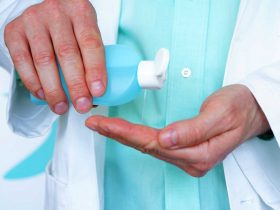By Nancy Collins, PhD, RDN, LD, FAPWCA, FAND
Documentation of turning and repositioning often leads to legal problems as some healthcare providers chart by exception and others chart at the point of care.
“The hospital never turned the patient, and therefore the patient suffered a serious pressure injury,” declared the plaintiff attorney. The defense team shot back, “Whoa. Slow down. Never is long time, and of course we turned the patient.” How can a basic care intervention such as turning and repositioning have two totally opposing views?
Policies and Systems for Patients at Risk
A pressure injury is localized damage to the skin and/or underlying soft tissue, usually over a bony prominence or related to a medical or other device. The injury occurs as a result of intense and/or prolonged pressure or pressure in combination with shear.1 One of the strategies to avoid these types of injuries is to turn and reposition the patient on a regular schedule.
Generally speaking most policies call for repositioning every 2 hours. Some facilities may include different hourly limits depending if the patient is in a wheelchair or a bed. Some might use a tool such as the “clock tool” to communicate the position for the patient at different times. Many different ways are used to accomplish this goal. Today’s discussion does not focus so much on what the policy says or the exact system in place, but rather that most healthcare facilities do in fact have a system for patients at high risk.
Documenting Routine Care
The debatable issue comes not from the exact policy or system, but rather from the documentation or lack thereof. Let’s assume that the policy calls for turning and repositioning the high-risk patient every 2 hours. Using simple arithmetic, this means turning and repositioning 12 times each day for the dependent patient. The multimillion dollar question is, when the nurses notes are reviewed, will we find a dozen entries every single day documenting that this schedule was adhered to? In most cases, we do not.
Does this lack of documentation infer that the turning and repositioning was not done? Or as many nurses have explained in deposition, they chart by exception (CBE),meaning that only unusual or unexpected findings are charted, while routine care is not. This reasoning might hold up, but how do you explain that every once in a while a nurse does in fact document that the patient was turned? Either you chart every time or you chart by exception. It is difficult to explain it both ways.
Usually the next line of questioning involves the often heard statement, “If it wasn’t charted, it wasn’t done.” Depositions tend to get contentious at this point, as one side argues that it was done and the other side counters that it was not done and they have proof because they have photographs of the resultant wound. How does a jury of lay people view this? If you guessed on the side of the plaintiff, you are correct, which is why so many out-of-court settlements are reached.
The Role of Electronic Health Records (EHRs)
As we make the shift to EHRs, the problems with documentation have morphed quite a bit. The first wave of EHRs was highly criticized for lack of space for narrative prose and having too many check-off boxes and drop-down menus. Many providers felt they had lost the ability to describe what happened during their shift. On the more positive side, EHRs allowed more documentation at the point-of-care and even right at the bedside depending on the system.
The second wave of EHRs is tackling this criticism and hopefully will land somewhere in the middle of requiring timely and lengthy narrative and losing the personalization altogether. Meanwhile, we all need to document in a manner that communicates a clear picture of the patient to other healthcare professionals. After all, the main purpose of the healthcare record is communication.
Flow Sheets May Bridge the Gap
Flow sheets are a critical component to CBE, and EHRs can handle them quite well. However, each institution needs to think about how to document routine care. Are you going to document it on a flow sheet? Or by shift? Or at the point-of-care? It is necessary to have a system in place that is communicated to all and followed by all for consistency. Flow sheets often are incomplete with many holes, and we are right back where we started. Intake and output flow sheets are notoriously incomplete, so while flow sheets can help, they sometimes create more problems.
This problem does not limit itself to turning and repositioning. The same scenario is debated about tube feedings. Do you document every single time the feeding tube is flushed or water given? Many times a patient with a wound also is losing body weight and may become dehydrated. Looking at a medical record that only has occasional mentions of turning and feeding and hydration sometimes is difficult to defend, especially when the patient has had a troublesome medical course and a less than hoped for outcome.
Conduct a chart audit with routine care in mind and see what you think. Are you getting a clear and consistent picture of the type of care that was given to the patient? If you are not, begin a discussion and determine the best way to handle this in your particular care setting. Remember that most legal cases take years to wind through the system, so ask yourself if you could say with certainty what care was given 5 years later. National Pressure Ulcer Advisory Panel. National Pressure Ulcer Advisory Panel (NPUAP) announces a change in terminology from pressure ulcer to pressure injury and updates the stages of pressure injury. National Pressure Ulcer Advisory Panel website. https://npiap.com/page/PressureInjuryStages.

















